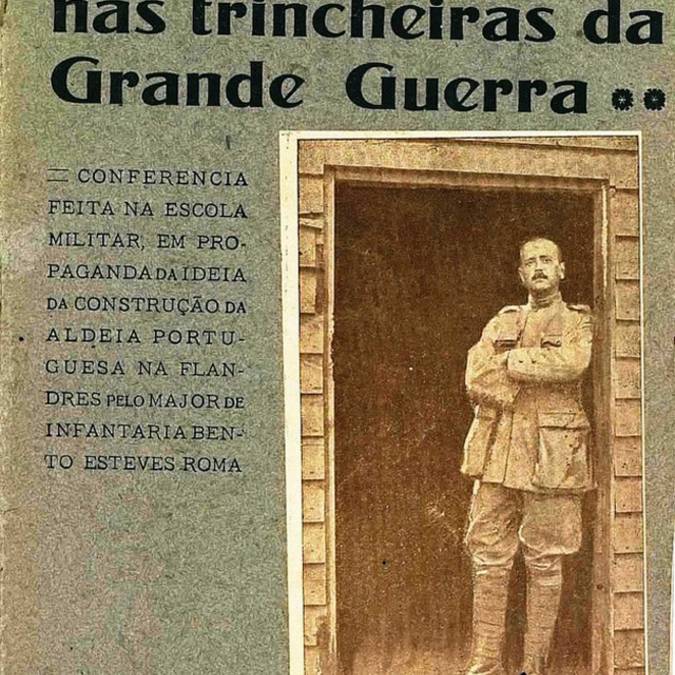A life in the service of Portugal
If you are fond of archival photos, you have encountered Colonel Bento Esteve Roma without knowing it. A photo, which became one of the emblems of Portugal's engagement in the Great War, shows the parade of troops on July 14, 1919 on the Champs Elysees. In front, a small, mustachioed man: this was Captain Bento Roma. He was promoted to the rank of Colonel in 1933.
Born in Chave, Vila Real, he joined the Portuguese army on August 5, 1903 and served in the 6th Cavalry Regiment until 1906. He then entered military school and received the rank of Second Lieutenant in 1909.
In 1912, he embarked for Angola and was based there until 1916. Then he was sent to the Western Front. By December, he was in Britain, where he received training by the British command. Then he participated in operations prior to the arrival of the Portuguese Expeditionary Corps in France from the British Headquarters of Etaples. From January 14, 1917, he was at Mametz. He prepared and organised the camp where the Portuguese troops who were trained at Tancos received additional military training on their arrival.
In April 1918, he was second in command of the 13th Battalion, stationed at La Couture. This reserve battalion was set up in the “réduit”. It was a large redoubt covering part of the centre of the town of La Couture. This fortified complex was protected by lines of barbed wire, and by small fortifications bristling with machine guns. A vestige is still visible today in the public garden at the back of the church. When the battle broke out, Captain Bento and his troops found themselves in the middle of the action. Indeed, the bombing by the German army broke the front lines and the soldiers were routed. The enemy advance was methodical and inexorable. The ground attack started at 7:15 in the morning. Faced with this, Bento organised, thought, positioned and resisted, but the advance of the enemy was such that orders were already obsolete even before they were given. However, the redoubt held firm. The Captain was unfortunately taken prisoner and sent to Camp Bressen, where he was released on November 11, 1918. He received the War Cross on June 8, 1918.
After the war, he embarked with his troops on August 15, 1919. After the war, he moved to Camp Tancos where he was in charge of preparing infantry troops. From 1920 to 1923, he was the Governor of Cubango, Lunda and Moxoco Districts in Angola. On February 5, 1922, he received the highest distinction awarded by the Portuguese army: the Collar of the Ordre Torre e Espada. In 1930, he became Governor General of Angola. In 1932 he was made Grand Officer of the Colonial Empire.
All these high functions were linked to a political commitment that was sometimes paradoxical since the man was convinced of the importance of colonialism, but at the same time he opposed the dictatorship of Salazar by campaigning with General Norton de Nattos.
Sources:
Portuguese military archives online: https://arqhist.exercito.pt/details?id=126645
Robert MALLEVAYl, 250 ans d’histoire à Neuve- Chapelle
Francis CARPENTIER: Loisne et Lawe, le village de La Couture dans la Grande Guerre, Ed La Couture, Champs de Cultures, 2013
